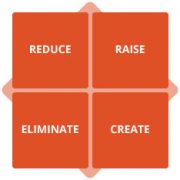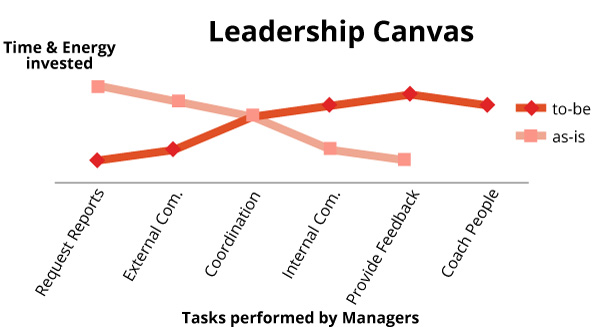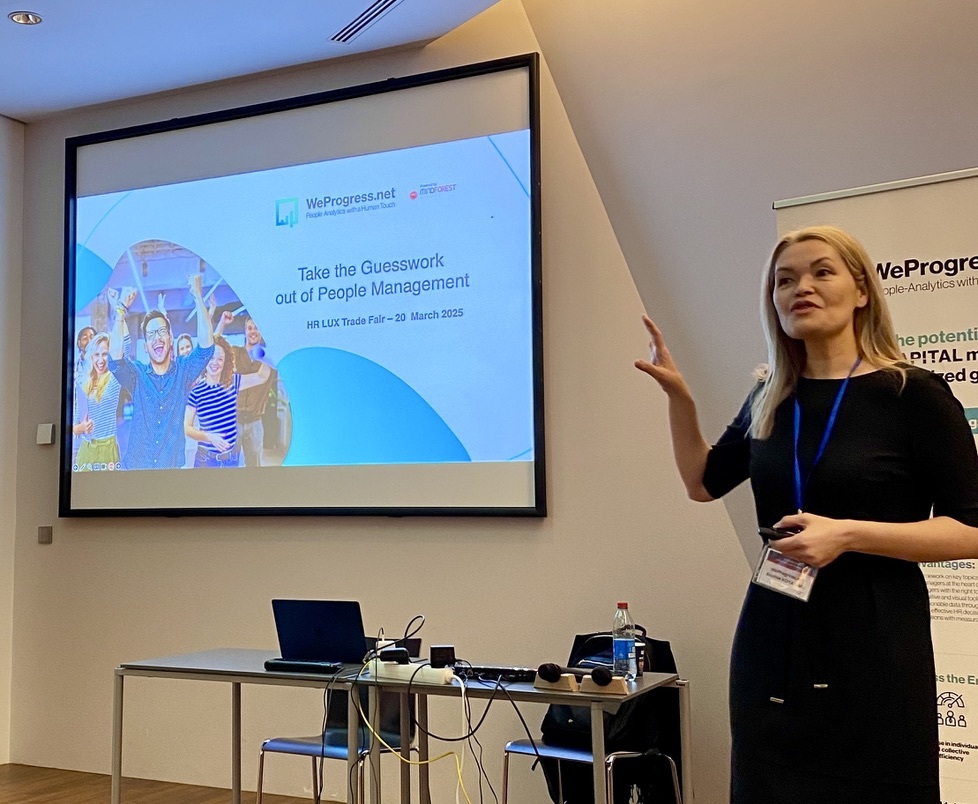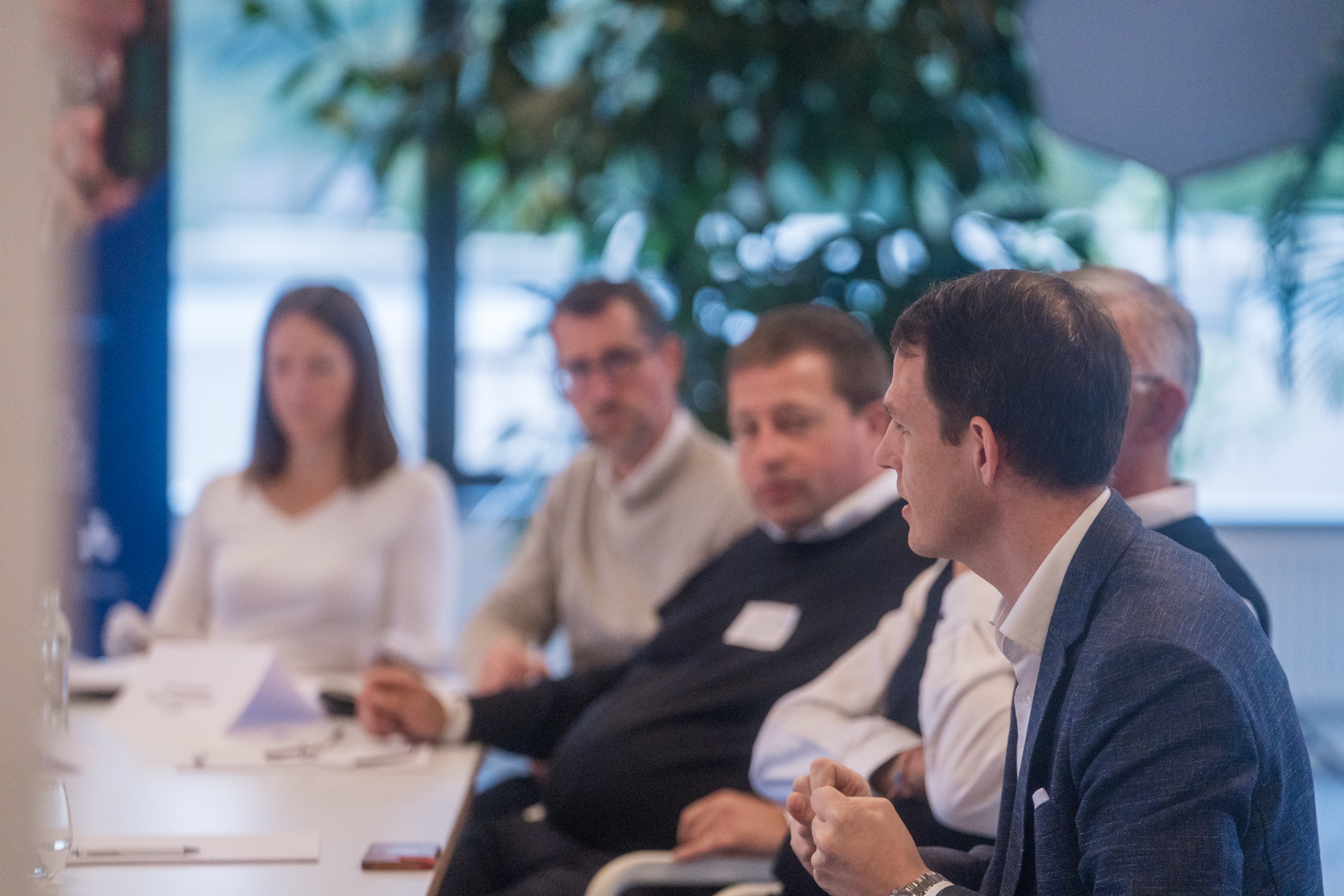Blue Ocean Leadership – A new approach to Change management projects?
An unconventional way of looking at leadership
Thinking of leadership as a product that can be bought and promoted is a rather unconventional way of analysing management practices. Nevertheless, exactly this unusual comparison serves as a basis for the Blue Ocean Leadership strategy.
If employees appreciate your leadership style, they “buy” it and are inspired to work with full commitment and motivation. If they do not, they will disengage, a state of mind, which can cost their company and the economy huge amounts of money (Gallup 2013). Therefore, the Blue Ocean Leadership strategy aims to release the infinite ocean of talent, skills and energy of underperforming heads by selling them “good” leadership.
Blue Ocean Leadership – The Methodology
The approach is the same as for its precursor, the Blue Ocean Strategy, which is used in product design and aims at tapping into uncontested market space. The first stage of the Blue Ocean Leadership strategy consists of defining the current situation, the so-called “as-is” situation. Subsequently, four questions have to be answered:
- Which actions and activities do leaders invest time and energy in that should be eliminated completely?
- Which actions and activities should be reduced below their current level?
- In which actions and activities should leaders invest more time and effort?
- Which actions and activities should leaders spend time and energy on that they currently do not take into consideration at all?

By answering these four questions one can define the situation as it should be, the “to-be” situation. By comparing, in the second stage of the process, the latter two situations in a canvas such as Figure 2, one can easily identify what managers, regardless of their hierarchical level, have to change in order to achieve the previously defined and sought after “to-be” situation.
Until today, this methodology has only really been applied to product design in relation with Blue Ocean Strategy, but very recently there have been some instances of application in the context of human resource issues. It has for example proven very effective for the design and development of Nintendo’s Wii, which took only two years to conquer about 45% of the market share (Hollensen 2013). In an HR context, a British Retail Group saved up to 50% on recruitment and training costs after restructuring their entire range of management practices (C. Kim & R. Mauborgne 2014). Surprisingly, in the field of human resources, this approach has only been implemented with issues related to management and leadership.

Only a Leadership strategy?
One important advantage that is always mentioned when analysing the Blue Ocean Leadership strategy is that it does not aim to change personal qualities and behavioural approaches, but only targets to change managers’ actions and activities. Its primary focus is on changing how people spend their time and deploy energy at work rather than on who they are.
Nevertheless, the Blue Ocean Leadership graph can be used in many different ways, not only with relation to leadership or time management. It is currently only used to improve managerial time and energy management, but why not let managers themselves use it to, for example, enhance the organisation and routines of their employees? Basically, the methodology used for Blue Ocean Leadership can be applied to every situation that encompasses change. Every situation that requires modification has an “as-is” situation and a “to-be” situation, both of which can easily be represented on the -let’s call it – “Blue Ocean Canvas”. The horizontal axis can represent everything from daily tasks executed by employees to strategic corporate goals. This analysis then provides a basis to determine in which field(s) something has to be achieved to fulfill the desired changes.
Still in its infancy…
The MindForest team recently used the Blue Ocean Leadership approach for the first time in a major change management project. With the goal to redefine the role of middle management for one of Luxembourg’s biggest employers, the new method identified amongst others the following problems: “We focus too much on operations” or “We need more open discussions on current projects”. After critically analyzing and defining the current situation, the managers, in cooperation with their executives, were able to find a common vision of what they should optimally invest their time and energy in. Following positive feedback from the client, we can conclude that the Blue Ocean Leadership strategy passed its first test and will most likely be reused for future projects.
Furthermore, the restructuration or reorganization of a company, the major task of change consultants, always offers a convenient opportunity to rethink organization’s leadership habits. And why not use the Blue Ocean Leadership approach to try to improve the manager’s time and energy repartition!
However, as Blue Ocean Leadership is still a relatively new concept, it only relies on a few case-by-case analyses. This unfortunately means that not many examples of an (successful) implementation of the Blue Ocean Leadership method have been published, hence the relative lack of academic support so far. In other words, the strategy still has to prove its general usefulness in today’s fierce business environment.
Sources
Gallup Inc., 2013. State of the American Workplace. Washington. Hollensen, S, 2013. The Blue Ocean that disappeared – the case of Nintendo Wii. Journal of Business Strategy, Volume 34 No. 5, 25-35. Chan Kim, W & Mauborgne, R, 2014. Blue Ocean Leadership. Harvard Business Review, 01 May. pp. 1-12.
Rafael Schneider
Expert in Human Capital Management @ MindForest
WANT TO RECEIVE OUR LATEST THOUGHT LEADERSHIP CONTENT?
Related posts
 Take the Guesswork out of People Management
Take the Guesswork out of People Management
 From processes to people: achieving quality
From processes to people: achieving quality
 Daring to lead Positive Transformation: What if Positive Emotional Capital was your key to sustainable change?
Daring to lead Positive Transformation: What if Positive Emotional Capital was your key to sustainable change?
 Why hire Change management professionals? We can do it alone!
Why hire Change management professionals? We can do it alone!
 Digital Transformation and Change Management: Lessons shared in an event hosted by Cebi and MindForest
Digital Transformation and Change Management: Lessons shared in an event hosted by Cebi and MindForest



